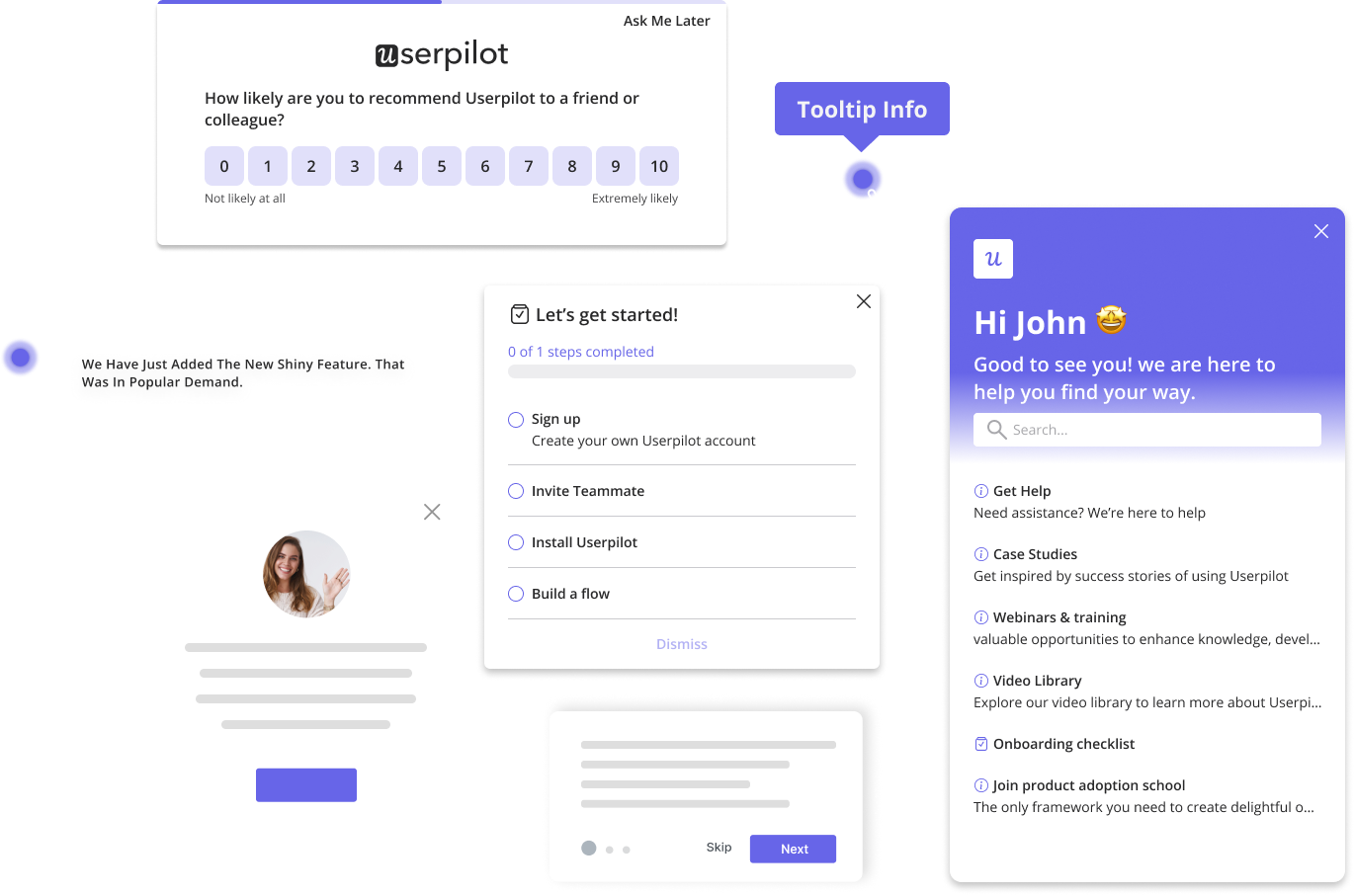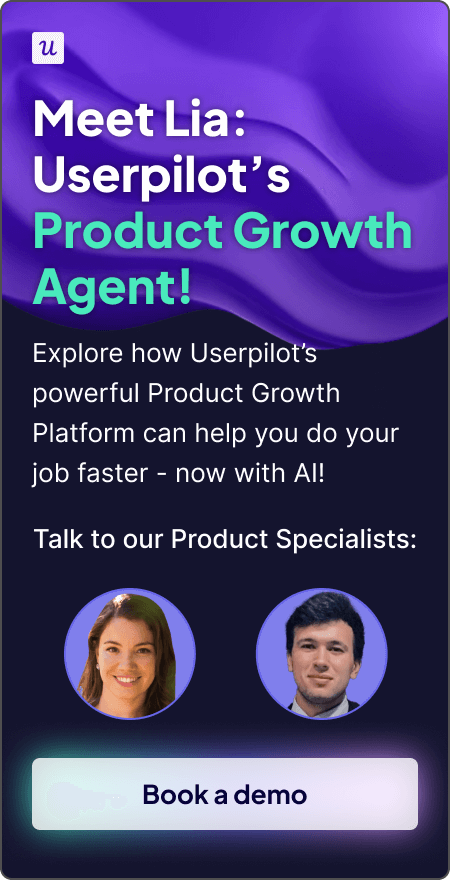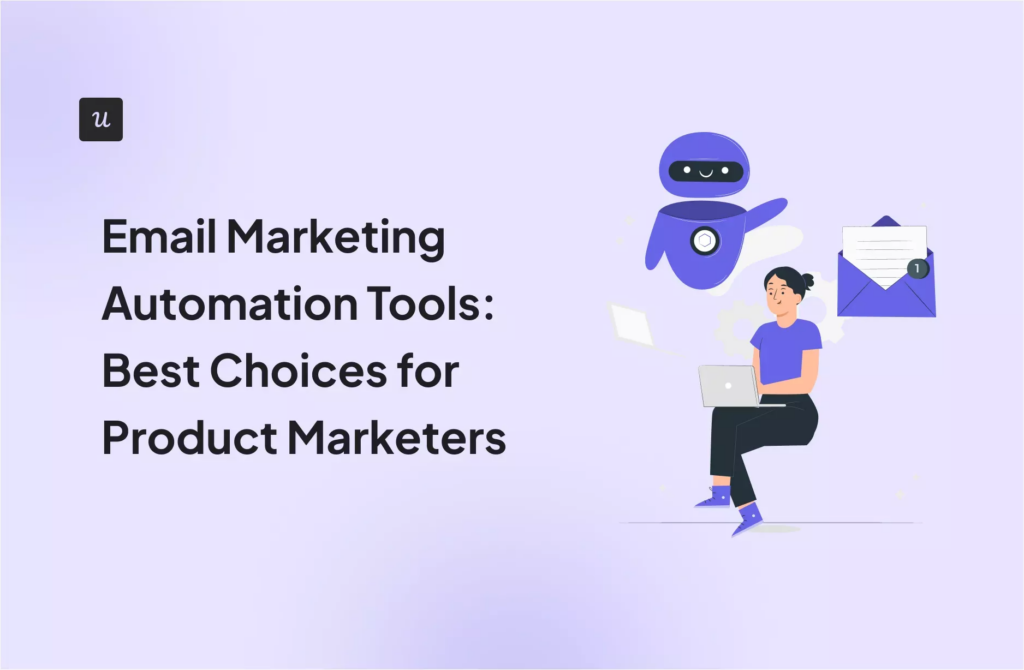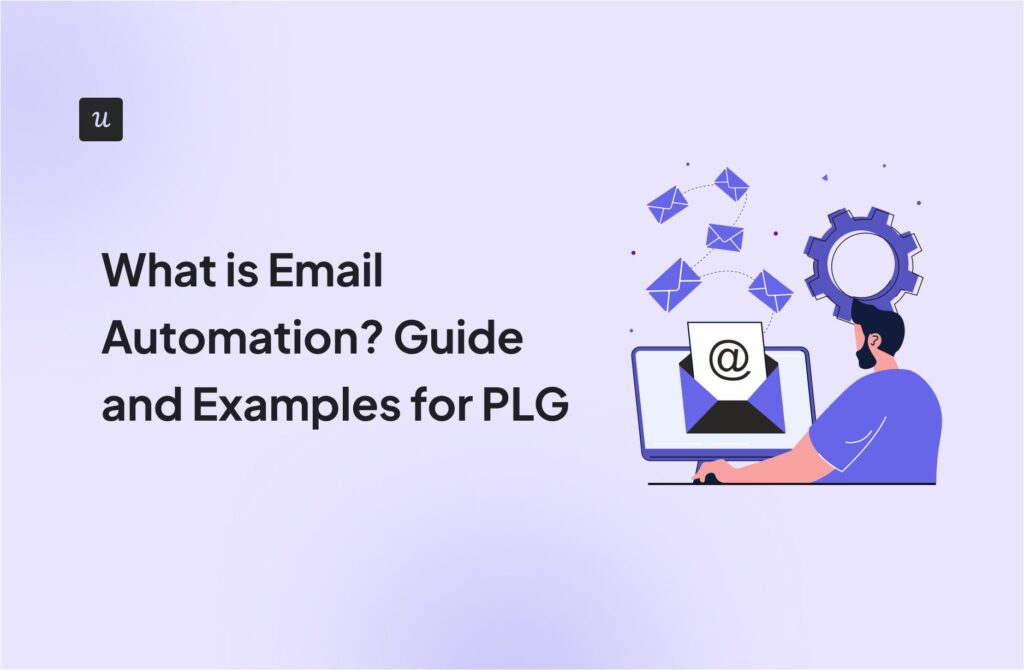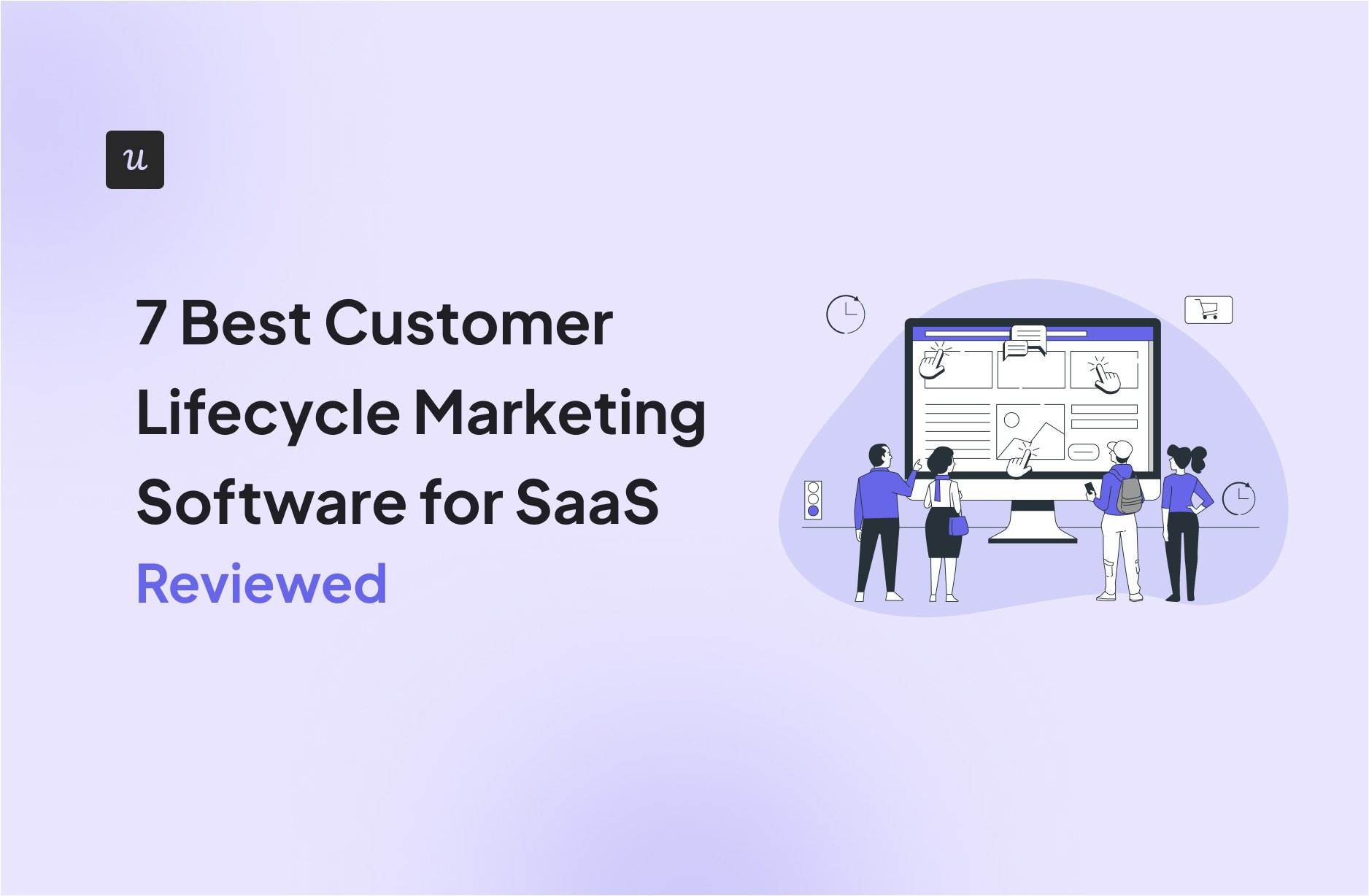
7 Best Customer Lifecycle Marketing Software for SaaS [Reviewed]
Customer lifecycle marketing (CLM) in SaaS covers every stage of the customer journey: acquisition, activation, retention, referral, and revenue/expansion. But managing it manually can be a nightmare: scattered data, disjointed onboarding, and missed upsell opportunities can cost SaaS companies millions in churn, which comes up to almost 10% of your business revenue.
That’s why today’s teams rely on customer lifecycle marketing software. These platforms automate critical touchpoints across the customer journey, personalize customer experiences using in-product data, and give you insights that guide smarter decisions.
In fact, firms with strong retention have seen growth rates at least 1.8× faster than peers with weaker retention, according to ChartMogul’s SaaS Benchmark report.
In this guide, I’ll review the seven best customer lifecycle marketing software for SaaS. I’ll break down their strengths, weaknesses, and ideal use cases for businesses like yours, so you can choose a solution that keeps your customer base engaged and revenue growing.
What’s your biggest lifecycle marketing challenge right now?
How are you currently guiding new users to their “Aha!” moment?
How do you currently measure customer health and satisfaction?
How do you identify which customers are ready for an upgrade?
The right customer lifecycle marketing software can solve that.
Based on your challenges, a tool that provides contextual, in-app guidance and robust analytics is key. A platform like Userpilot can help you automate onboarding, boost feature adoption, and identify expansion opportunities—all without writing code.
Try Userpilot Now
See Why 1,000+ Teams Choose Userpilot
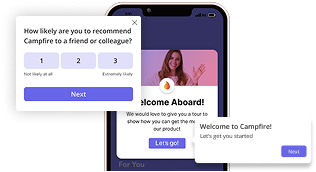
What to look for in customer lifecycle marketing software for SaaS
Customer lifecycle management and marketing software can significantly improve your retention strategy (or harm it). But it’s easy to get feature-overwhelmed. Here’s my checklist of must-have capabilities and the key questions that I ask myself before committing.
| Feature | What it means | Question to ask |
|---|---|---|
| CRM integration | Sync customer data and interactions across tools to maintain a single source of truth. | Does this tool integrate well with our existing CRM and keep data up-to-date in real time? |
| Automation | Automate customer lifecycle touchpoints like onboarding emails or in-app guides across multiple channels. | Can it handle automation across multiple channels without heavy developer involvement? |
| Segmentation | Segment users based on behavioral data or customer lifecycle stage for better targeted campaigns. | How granular can we segment customers? |
| Analytics and reporting | Track engagement, conversion, and retention to understand what’s working across lifecycle stages. | Does it offer actionable insights, not just raw data? |
| Personalization | Deliver tailored content and customer experience that match user context and behavior. | Can we personalize both email and in-app messages without coding? |
| Feedback mechanisms | Collect in-app surveys and NPS scores to capture customer sentiment. | Can we trigger feedback requests based on user actions? |
| Scalability and flexibility | Ability to adapt to new workflows without a complete overhaul. | Will it fit when we double our customer base or add new products? |
| Ease of use | Balance between intuitive UI and advanced options. | Will our team adopt it quickly? |
| Pricing models | Understand how costs scale with increased usage to avoid surprises. | Is the pricing predictable as we scale? |
💡 Pro tip: Early-stage companies should focus on onboarding tools, automation, and analytics to drive activation and retention. On the other hand, established SaaS businesses should consider health scoring, feedback mechanisms, and advanced personalization for expansion and upsell.
The 7 best customer lifecycle marketing software
From inactive customers to brand advocates, the following software will help you streamline customer lifecycle management. It will also improve how you interact with users at different stages of the customer journey. To help you decide, for each tool I’m laying out:
- The top use case
- Overall G2 rating
- Standout features for CLM
- Pros and cons
- Pricing
So you can see what fits your business size, industry, and individual needs.
1. Userpilot: Best for product-led growth and improving customer loyalty
Best for: SaaS companies that prioritize product-led growth. Companies that optimize user onboarding, feature adoption, and retention inside the product. Businesses that need behavior-driven analytics to manage the entire customer lifecycle.
| Overall Userpilot G2 rating | 4.6/5⭐️ |
|---|
Userpilot enables product, sales, and marketing teams to drive growth inside the product, not just through email campaigns or off-product channels.
Many customer lifecycle management tools are heavily email marketing-centric. But Userpilot successfully blends in-app experiences, automation, and analytics to speed up activation and improve customer retention. This ultimately supports your revenue growth.
With Userpilot, you can rely less on external marketing channels and deliver contextual, personalized guidance within the app, no engineering resources required.
Standout features:
- Interactive walkthroughs and checklists: Easily create personalized product tours, onboarding flows, and feature adoption checklists without any coding. This helps you keep users engaged longer and reduce early drop-offs.

- Contextual UI patterns: Use hotspots, tooltips, modals, banners, and slideouts to provide on-demand, contextual in-app guidance directly. This way, you reduce the number of support tickets because users know exactly what to do.
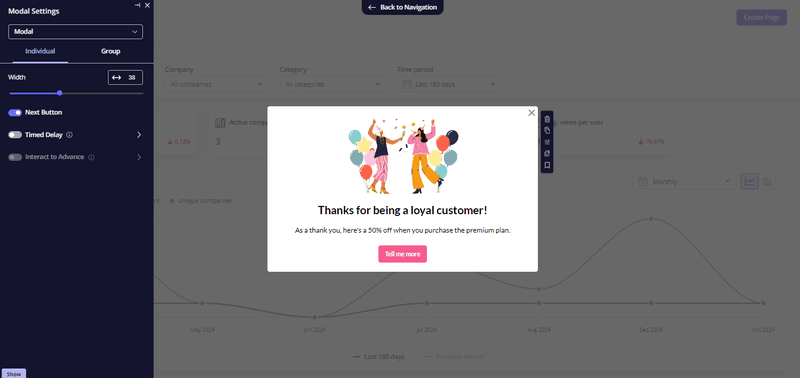
- In-app resource centers: Build self-serve knowledge hubs within your product and let users find answers and assistance without leaving the app, which reduces the number of repetitive queries and improves customer experience.
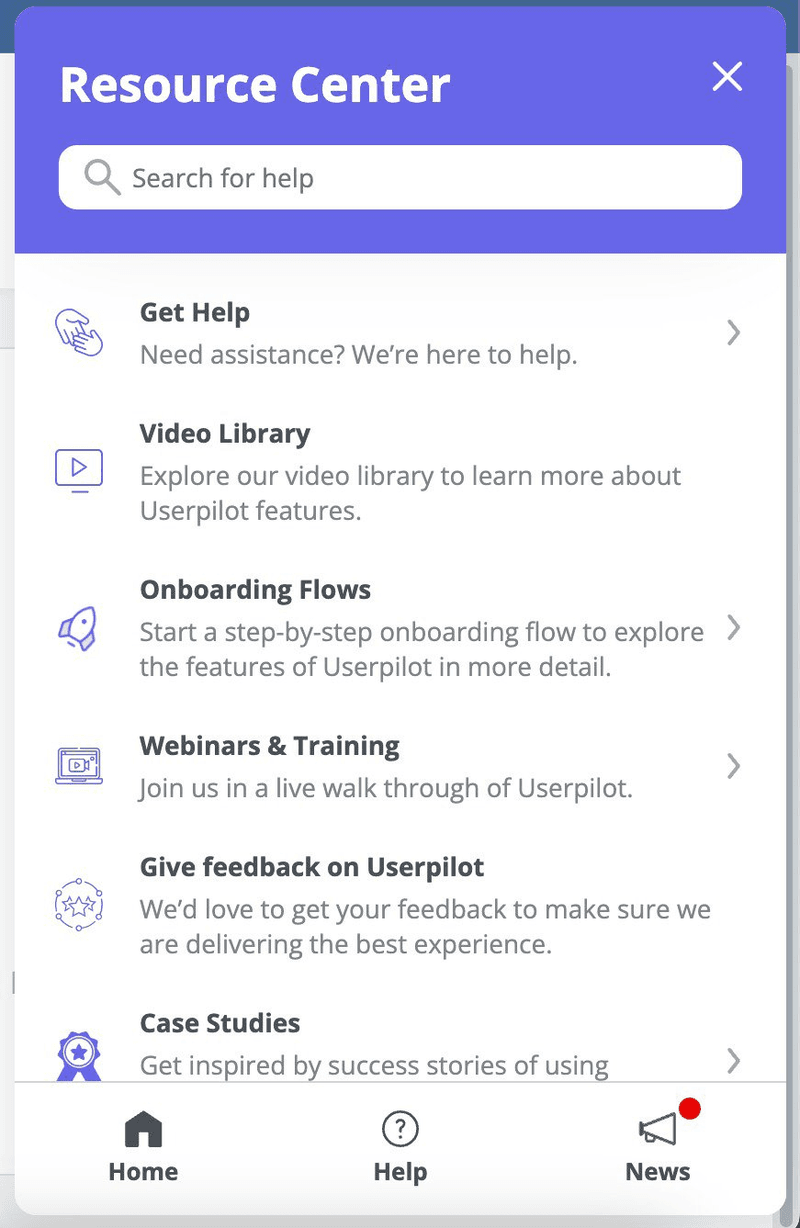
- Behavioral segmentation based on customer data: Segment users based on their in-app behavior, feature usage, survey responses, etc. This helps you deliver more personalized messaging to each segment and boost loyalty and customer lifetime value.
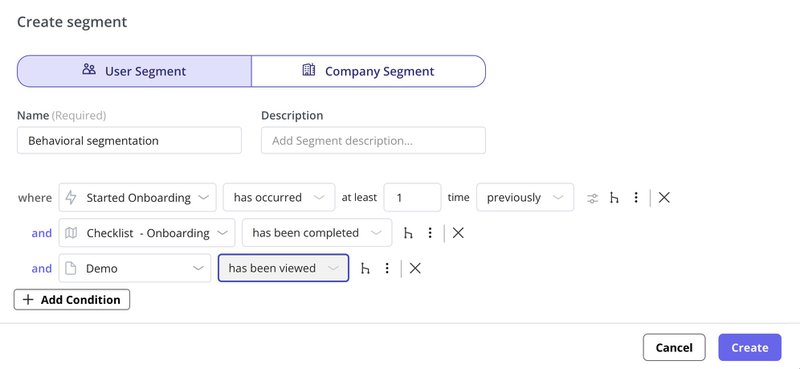
- Automatic event tracking (autocapture): Userpilot automatically records key user actions (feature clicks, page visits) without manual tagging, providing immediate, ready-to-analyze event data for customer lifecycle management. This way, you’ll know what to prioritize in your development process and improve customer engagement.
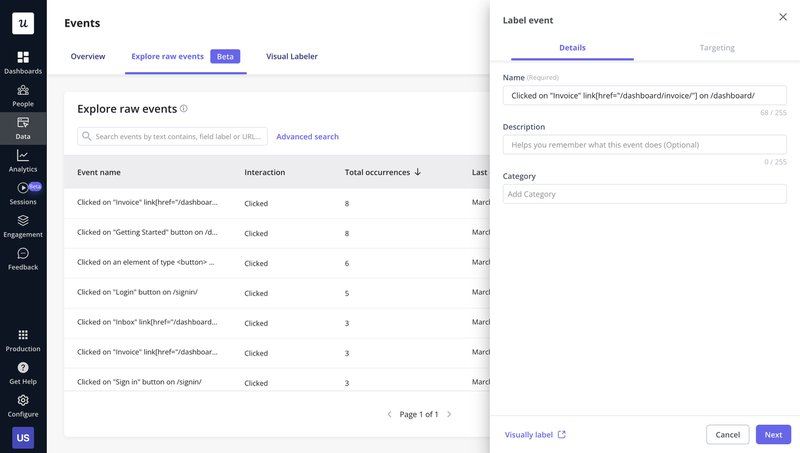
- Funnel analysis: Visually track user progression through critical user funnels (like trial to paid conversion, onboarding completion) to identify frequent drop-off points and areas for optimization in your lifecycle marketing strategy.
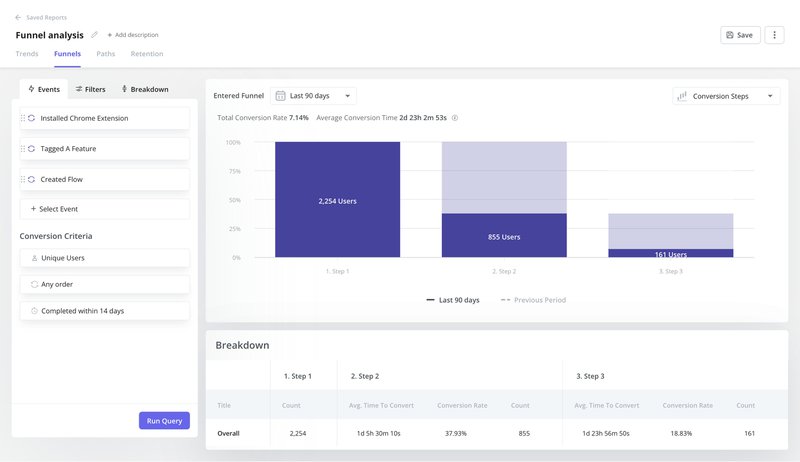
- Code-free survey builder: Create various survey types, including NPS, CES, and CSAT, directly within the platform for different lifecycle stages. This helps you understand customer sentiment from the very beginning and work on preventing churn.
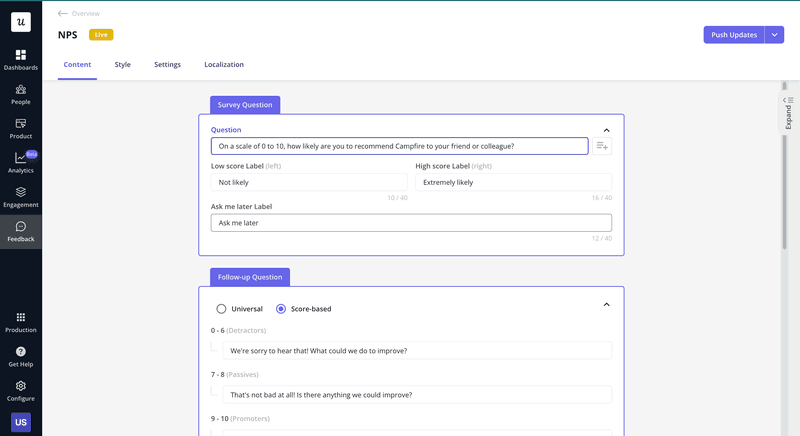
- A/B testing: A/B test different versions of your in-app guides, onboarding flows, and messages to identify what resonates best with different customer segments. This way, you’ll be able to understand what delivers the most possible value for each customer segment.
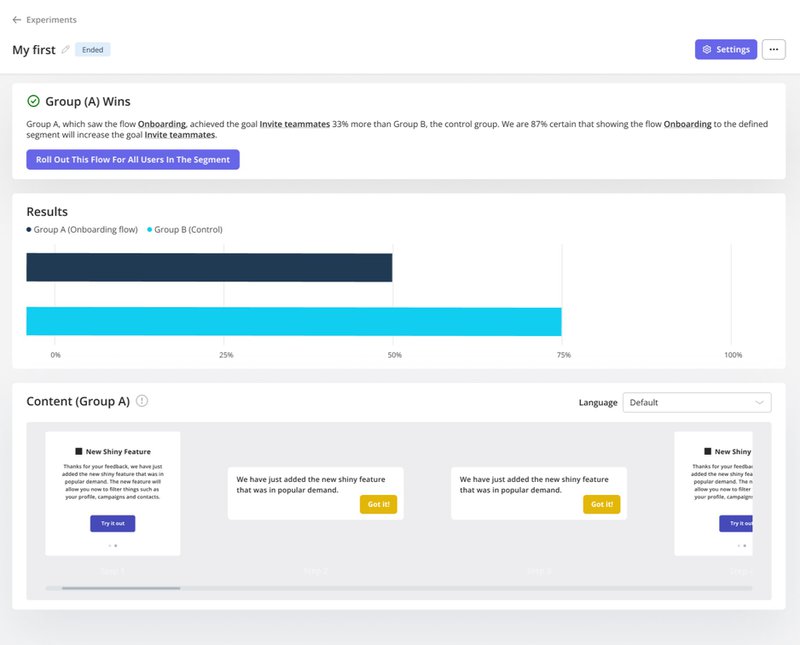
- Unified analytics: Use web and mobile analytics in one place to prevent tech fragmentation across multiple channels. Build custom dashboards to create personalized customer interactions and understand which actions drive the most favorable outcomes.
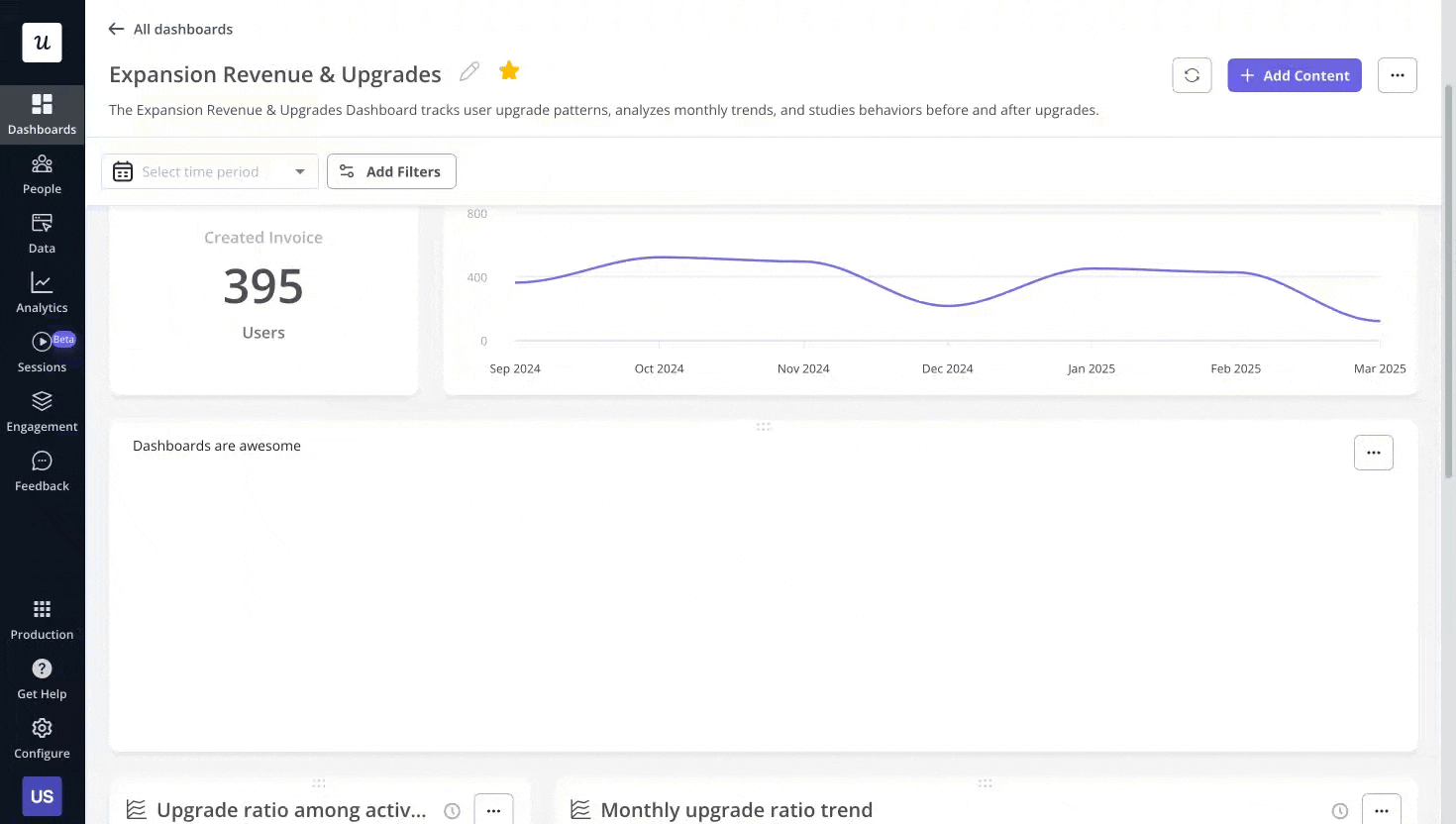
Want an example of how Userpilot works and what it can do? GrowthMentor used Userpilot’s checklists to improve onboarding and managed to reduce support tickets related to this process by 83%.
Pros:
- Lifecycle marketing happens inside the product, not just through email.
- Code-free setup for onboarding, UI patterns, and surveys with no heavy developer involvement needed.
- Powerful analytics, including funnel analysis and event tracking, tightly integrated with engagement tools.
Cons:
- Some users find the learning curve a bit steep, especially if they’re beginners at analytics.
- Reporting comes with somewhat limited customization options.
Userpilot pricing:
- Starter: From $299/month paid annually
- Growth: Contact the sales team for more information
- Enterprise: Contact the sales team for more information
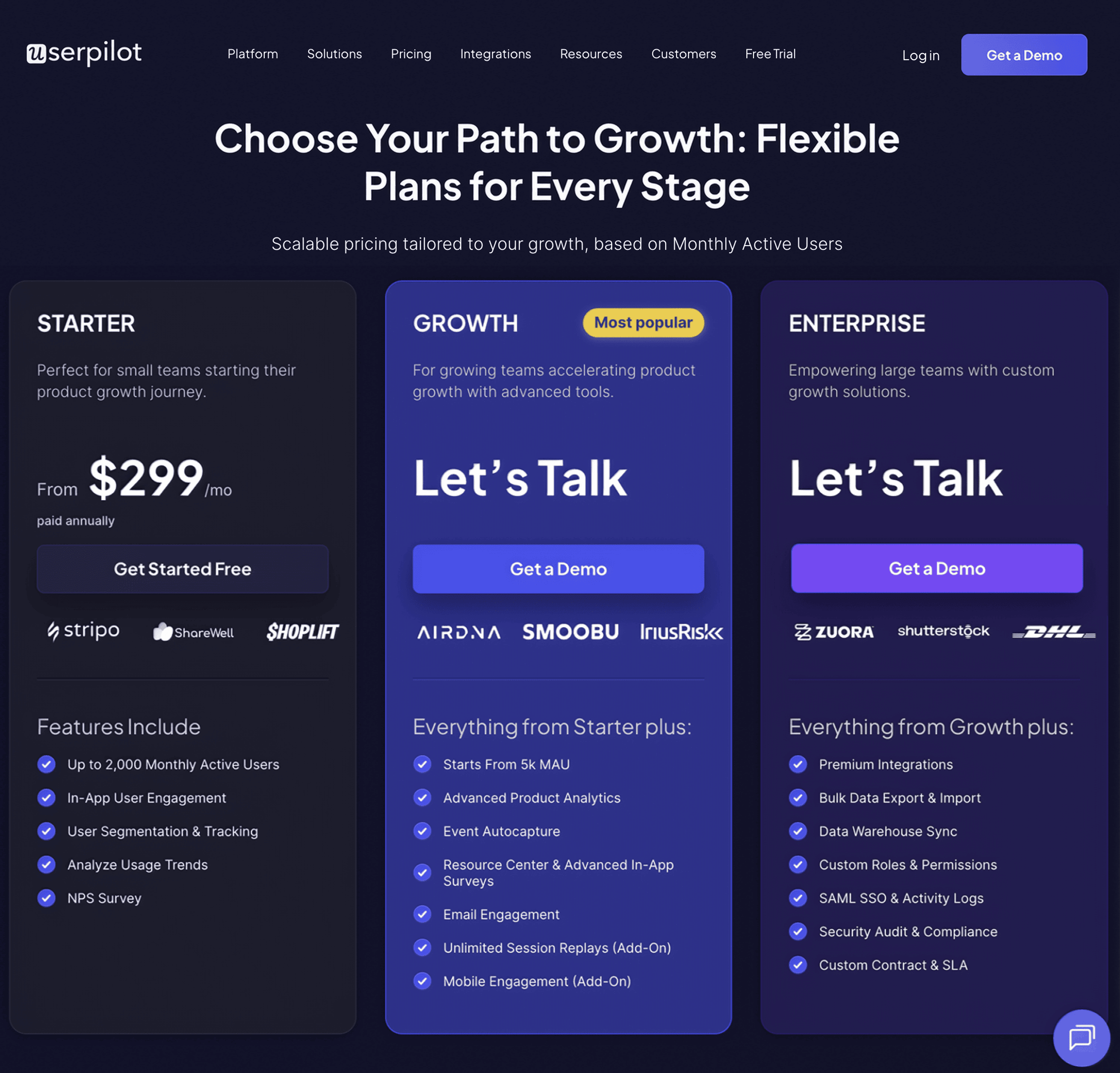
2. HubSpot Marketing Hub: Best inbound and lifecycle platform
Best for: Small to large B2B and B2C companies that want a unified CRM-powered marketing solution that supports end-to-end customer lifecycle management in one place.
| Overall HubSpot G2 rating | 4.4/5⭐️ |
|---|
HubSpot is a comprehensive inbound marketing and lifecycle software solution that brings marketing, sales, and service together in one platform, covering functionalities like lead acquisition and customer nurturing with advanced automation and analytics options.
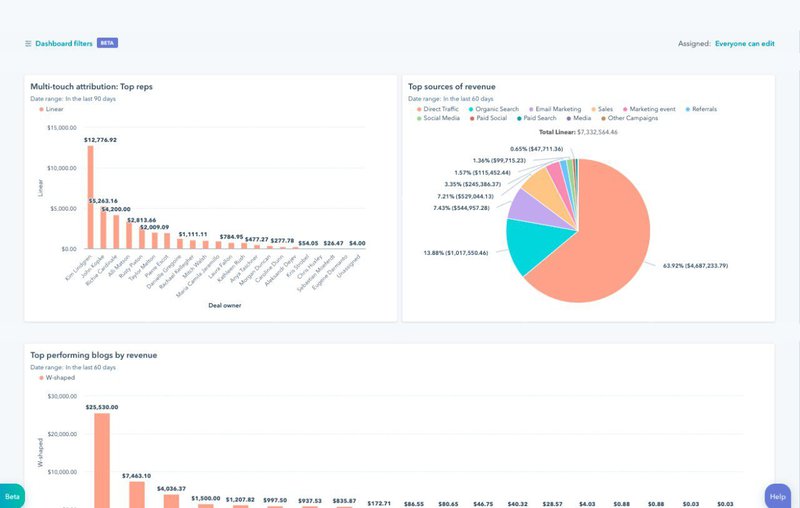
Key features for CLM:
- Centralizes contact and behavioral data for consistent messaging across Acquisition, Activation, and beyond.
- Automatically segment and qualify leads for marketing and sales alignment.
- Collect NPS and feedback from your customer base at different lifecycle stages.
Pros:
- Combines marketing, sales, and service without data silos.
- Drag-and-drop builders, pre-built templates, and strong user support resources.
Cons:
- The price can increase quickly as you scale contacts and features.
- Steep learning curve for advanced features like custom workflows and reports.
HubSpot pricing:
- Professional: $792/mo, including 3 core seats and 2,000 marketing contacts
- Enterprise: $3,300/mo, including 5 core seats and 10,000 marketing contacts
- Both plans require a one-time onboarding fee and allow for paying for additional seats.
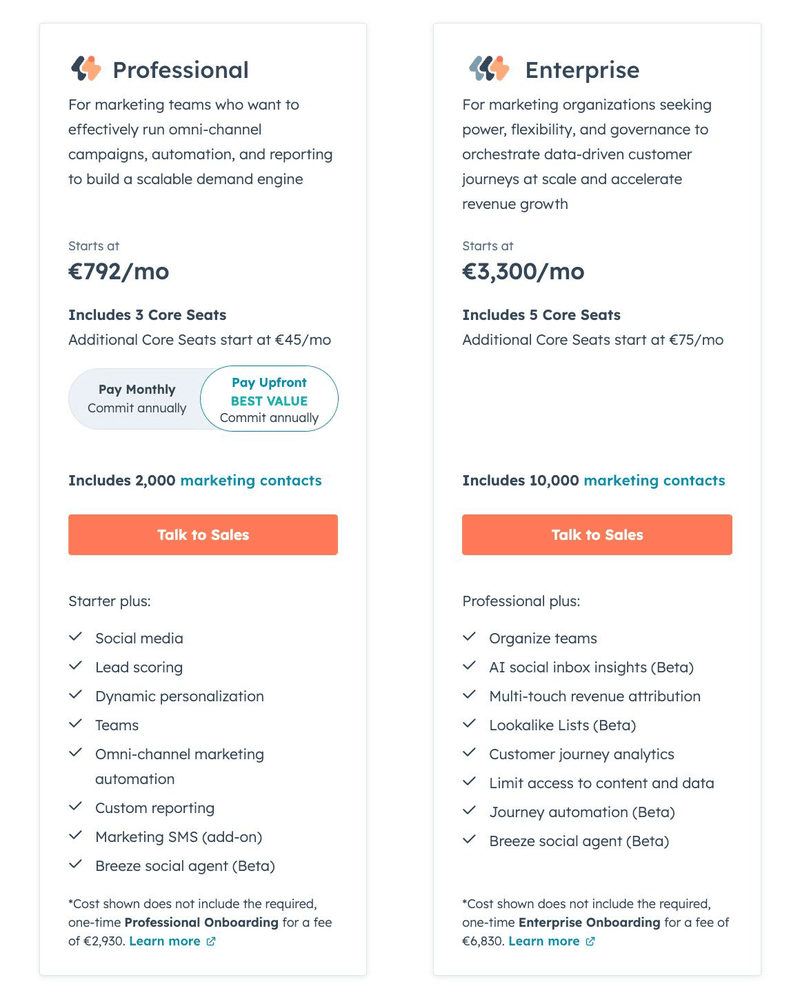
3. ChurnZero: Best for churn prevention and improving customer retention
Best for: Mid-market to enterprise SaaS companies that need to tightly manage renewal, expansion, and reduce churn through proactive customer success.
| Overall ChurnZero G2 rating | 4.7/5⭐️ |
|---|
ChurnZero is a platform for subscription businesses that offers AI-powered health scoring, journey automation, and real-time customer insights. It helps your success team deliver personalized, timely interventions to onboard new customers, identify upsell triggers, and prevent churn.
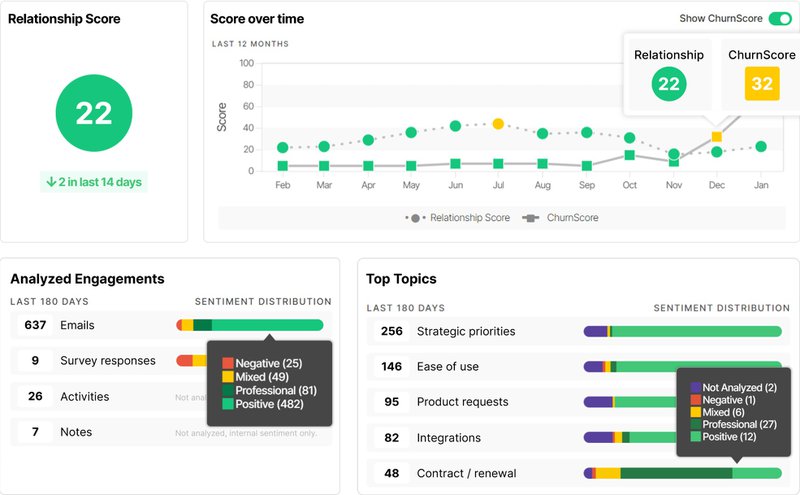
Key Features for CLM:
- Create structured CS workflows with triggers and tasks.
- Run guides, alerts, and surveys within your product.
- Monitor usage trends, relationship metrics, and set proactive notifications.
Pros:
- Excellent customer support.
- Easy-to-use and efficient automation features.
Cons:
- Perceived cost on the high end.
- Complex and not very intuitive.
ChurnZero pricing:
ChurnZero doesn’t display its pricing publicly. You will need to reach out to get a quote.
4. Omnisend: Best for ecommerce multi‑channel customer lifecycle campaigns
Best for: Small to mid-size eCommerce-focused SaaS brands that rely on email, SMS, and push to nurture across the customer lifecycle.
| Overall Omnisend G2 rating | 4.6/5⭐️ |
|---|
Omnisend is a marketing automation platform that helps businesses run personalized email marketing, SMS, and push notifications for different stages of the customer lifecycle. It offers strong eCommerce integrations.
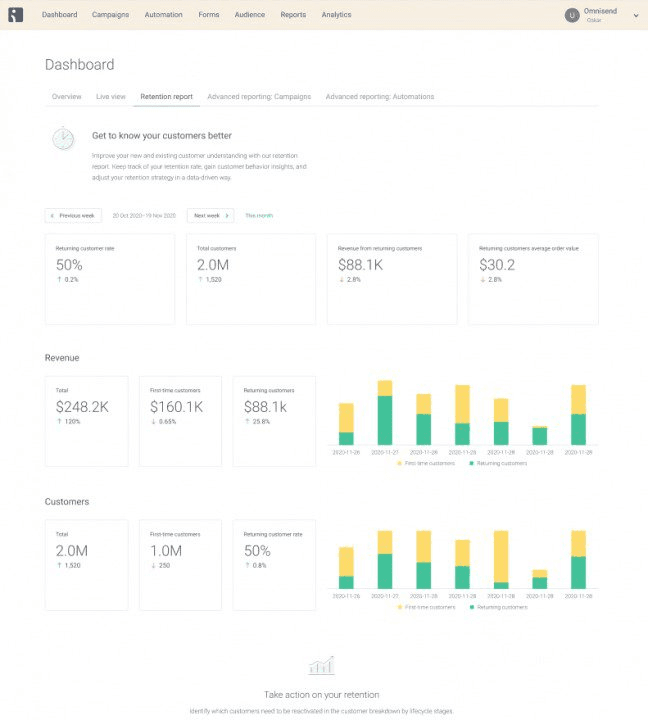
Key Features for CLM:
- Email + SMS + Web Push automation in unified workflows.
- Advanced behavior-driven segmentation.
- Revenue-dedicated performance dashboards.
Pros:
- Highly intuitive.
- Free tier with all the core features.
Cons:
- Limited in-app guidance.
- Based on G2 reviews, poor customer service.
Omnisend pricing
- Free plan: Up to 500 email sends per month
- Standard: $11.20 per month
- Pro: $41.30 per month
- Custom: Information on request
* These prices refer to 3-month upfront payments.
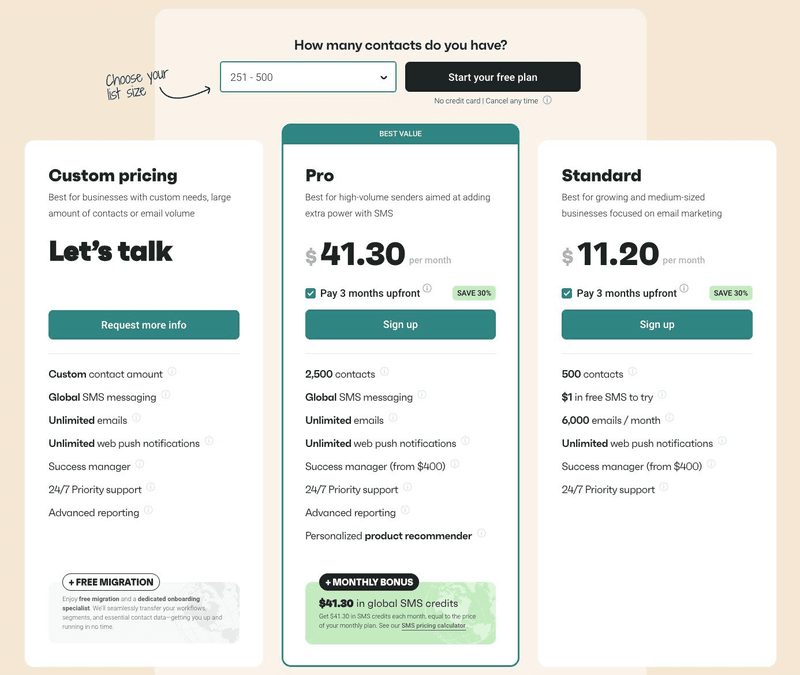
5. EngageBay: Best affordable all‑in‑one CRM + customer lifecycle software
Best for: Small businesses and growing SaaS companies looking for a budget-friendly CRM + lifecycle marketing automation platform.
| Overall EngageBay G2 rating | 4.6/5⭐️ |
|---|
EngageBay is a cost-effective all-in-one platform that combines CRM software, marketing automation, and helpdesk functionality. It helps you manage customer interactions and marketing messages across the customer journey.
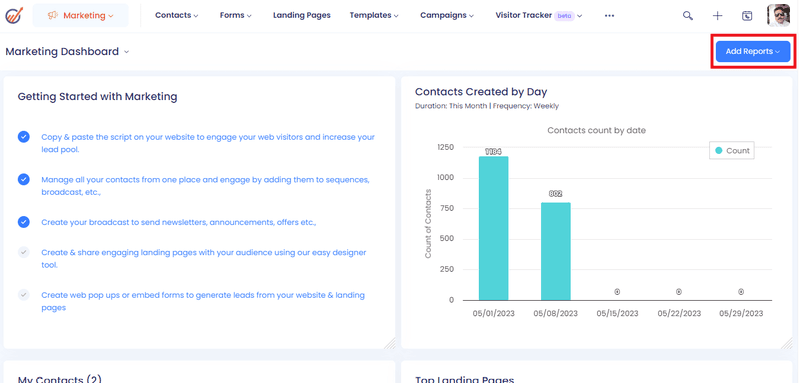
Key Features for CLM:
- Email marketing + SMS + push notifications.
- Lead scoring, behavioral segmentation, and landing pages.
- Marketing automation and web pop-ups.
Pros:
- Affordable for small SaaS teams.
- Strong customer segmentation options.
Cons:
- Limited customization.
- Steep learning curve for new customers.
EngageBay pricing:
- Free plan for 250 contacts
- Basic: $11.04
- Growth: $42.49
- Pro: $67.99
* These prices require a biennial commitment.
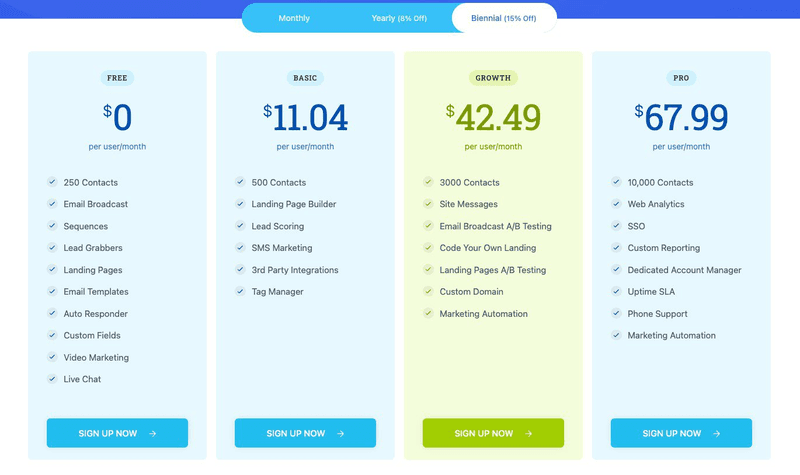
6. Customer.io: Best for code-savvy automation across the entire customer journey
Best for: SaaS teams that need event-driven, multi-channel campaigns with advanced customization.
| Overall Customer.io G2 rating | 4.4/5⭐️ |
|---|
Customer.io is a customer lifecycle marketing tool built for technical teams. It comes with advanced workflow automation, customer data segmentation, and support for notifications, in-app messages, and webhooks.
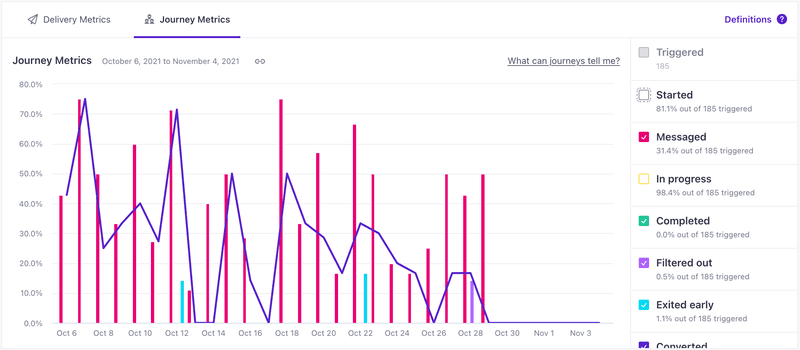
Key Features for CLM:
- Multi-channel messaging: email, SMS, push, and in-app.
- Real-time, event-driven workflows.
- Advanced segmentation and personalization at every customer touchpoint.
Pros:
- Flexible automation features.
- Strong developer resources.
Cons:
- Requires technical expertise.
- Higher cost for advanced features.
Customer.io pricing:
- Essentials: From $100/month
- Premium: From $1,000/month
- Enterprise: Custom pricing
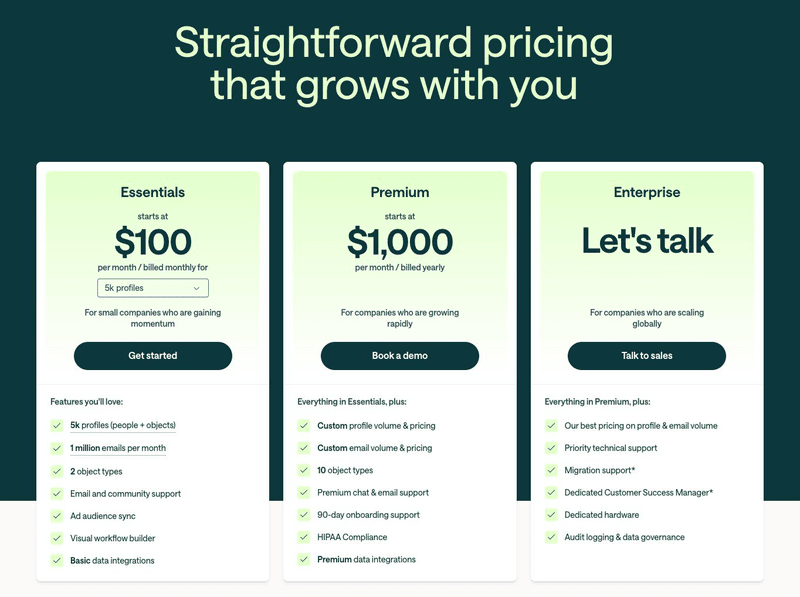
7. Salesforce Marketing Cloud: Best enterprise platform for customer lifecycle management across multiple channels
Best for: Large enterprises with multi-channel marketing campaigns and customer lifecycle strategies at scale. It’s especially suitable for those who already use Salesforce CRM.
| Overall Salesforce Marketing Cloud G2 rating | 4.0/5⭐️ |
|---|
Salesforce Marketing Cloud is a complex enterprise customer lifecycle software that delivers personalized campaigns to your customers. It includes marketing activities across the website, as well as email marketing, SMS, and social media campaigns.
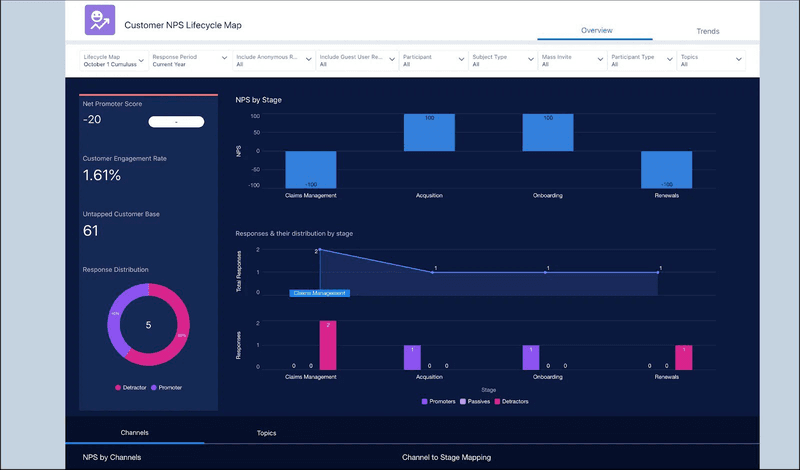
Key Features for CLM:
- Cross-channel automation (email, mobile, ads).
- AI-driven personalization and predictive analytics.
- Real-time segmentation for customer data.
Pros:
- Advanced customer lifecycle marketing strategy features.
- Enterprise-grade compliance and security.
Cons:
- High pricing.
- Long and complex implementation.
Salesforce Marketing Cloud pricing:
- Starter Suite: $25 per user per month
- Growth Edition: $1,500 per month
- Advanced Edition: $3,250 per month
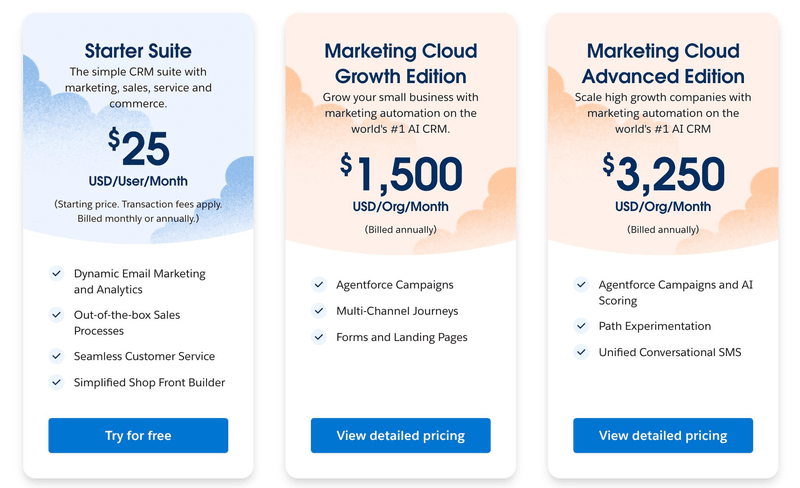
Choosing the right customer lifecycle marketing software for your SaaS
Your choice depends on your budget, growth stage, business objectives, and current challenges. So, don’t just copy other companies’ customer lifecycle management stack.
Instead, I recommend using the following steps to assess your needs and choose a customer lifecycle software solution that fits your business.
1. Define your current customer lifecycle management challenges
I suggest starting by understanding your current bottlenecks. Map out the whole customer journey, from awareness to advocacy, to identify the weak points.
Questions to ask:
- Where are your biggest drop-offs? (free trial to paid conversion, feature adoption, renewal rates).
- What are your key CLM metrics (activation rate, feature adoption, churn rate, customer lifetime value), and how do you currently track them?
- What routine tasks require significant marketing efforts or take the success team’s time? (sending welcome emails, tracking user activity, or identifying at-risk customers).
Example: Your trial-to-paid conversion rate is low. If your team manually sends onboarding emails, you need a tool with strong in-app onboarding flows and behavioral automation to improve activation at scale.
Attention Insight improved new user activation rates by 47% within only six months after signing up for Userpilot:
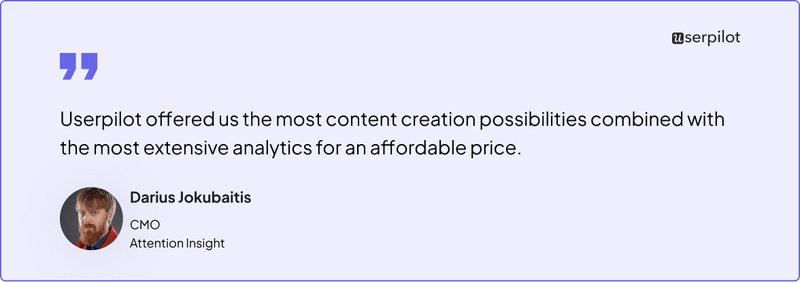
2. Prioritize features based on your objectives
Next, I’d create a tiered list of must-have, nice-to-have, and future-need features, based on the challenges you identified above.
Questions to ask:
- Which features will have the most impact on user activation, retention, and expansion?
- Which functionalities are key to replacing manual work?
- What can be delayed until your SaaS reaches the next growth stage?
Example: If activation is your top priority, focus on onboarding tools, customer lifecycle segmentation, and product analytics over advanced referral programs or attribution reporting.
3. Assess your current tech stack and integration needs
Your lifecycle marketing software should play nice with the tools you already use, like CRM, analytics, billing, and support platforms.
Questions to ask:
- Which existing systems must integrate with your CLM software?
- Does the tool offer native integrations for these systems, or will you need custom API work?
- Can the software centralize data from multiple sources without duplicating effort?
Example: You already rely heavily on HubSpot CRM. I’d choose a platform that integrates natively to avoid data silos.
4. Analyze pricing models and total cost of ownership (TCO)
Factor in potential hidden costs like onboarding, seat-based pricing, and growth-based scaling.
Questions to ask:
- How does pricing scale with monthly active customers or contacts?
- Are there additional costs for advanced features or add-ons?
- What are the estimated onboarding or implementation fees?
Example: A tool that looks affordable at 1,000 MAUs may become expensive as you grow to 10,000 MAUs. Plan for future pricing tiers.
5. Plan for future growth
Choose software that supports your business today and in the next 1–3 years. I’d consider new product lines, user growth, and the increasing complexity of your marketing efforts.
Questions to ask:
- Will the tool handle your projected MAU growth without performance issues or steep price jumps?
- Does it support advanced functionality you’ll need later, like multi-product analytics?
- Can it accommodate new teams without requiring a full platform migration?
Example: You’re expecting to expand into mobile in a year. I’d avoid tools that only support web-based onboarding.
6. Read reviews and case studies
Customer reviews and case studies reveal real-world performance and support quality. Community feedback also highlights issues that aren’t visible on sales pages.
Questions to ask:
- What do SaaS companies similar to yours say about this tool on G2, for example?
- Are there case studies that show measurable improvements in activation, retention, or expansion?
- How responsive is the vendor’s support team based on customer feedback?
Example: G2 reviews mention long onboarding times. Factor that into your implementation timeline.
Invest in your SaaS customer future
Choosing the right customer lifecycle marketing software is an investment in customer loyalty, retention, and long-term growth.
For SaaS companies embracing product-led growth, this means shifting from off-product tactics to real-time in-app engagement, contextual onboarding, and behavior-driven personalization. When your product becomes the key driver of activation, retention, and expansion, every interaction adds tangible value.
Userpilot helps SaaS teams get the most value from personalized onboarding flows, in-app messaging, and advanced product analytics without heavy developer work. With engagement and analytics brought together in one platform, you can easily identify drop-offs, optimize the buyer journey, and scale customer success inside your product.
Ready to turn your product into your biggest growth engine?
See how Userpilot helps SaaS companies optimize customer lifecycle marketing at every touchpoint users interact with your brand.
FAQ
What are the 5 customer lifecycle stages?
The five customer lifecycle stages define the customer journey from the first interaction to becoming loyal customers:
- Acquisition: Attract potential customers through multiple channels and convert them into active ones.
- Activation: Drive customer activity early so they experience your product’s core value quickly.
- Retention: Maintain engagement to reduce churn and improve customer relationships through providing them with ongoing value.
- Referral: Turn satisfied customers into advocates who will promote your product to their networks and introduce it to new potential customers.
- Revenue/Expansion: Increase customer lifetime value (CLV) by upselling, cross-selling, and renewing existing customers.
What is the difference between CRM and CLM?
Both CRM and CLM are essential for proper customer lifecycle management, but there are differences in their purpose and features:
- CRM (customer relationship management) is a system of record for customer data, purchase frequency, purchase history, and other interactions. It supports your marketing efforts and sales reps in managing prospective customers, opportunities, and pipelines across all your channels.
- CLM (customer lifecycle marketing) focuses on marketing automation and personalized campaigns that engage customers across different stages of the customer journey. CLM drives action by creating marketing messages for your target audience, tailored to customer behavior, lifecycle stage, and success metrics, which ultimately helps businesses improve customer retention.
Note: CLM may also stand for customer lifetime value: how much revenue you make from one customer.
What is a lifecycle marketing program?
A lifecycle marketing program is a marketing strategy designed to move target customers through every stage of the customer journey. It lets you:
- Create personalized buyer interactions through email marketing, in-app messages, etc.
- Automate onboarding flows and access dashboards to track customer behavior for different customer segments.
- Build campaigns for feature adoption, customer feedback collection (such as NPS surveys), and customer loyalty programs that reward repeat customers.
The goal is to create a consistent customer experience across multiple channels and reduce friction, helping you maximize customer lifetime value and customer loyalty.

